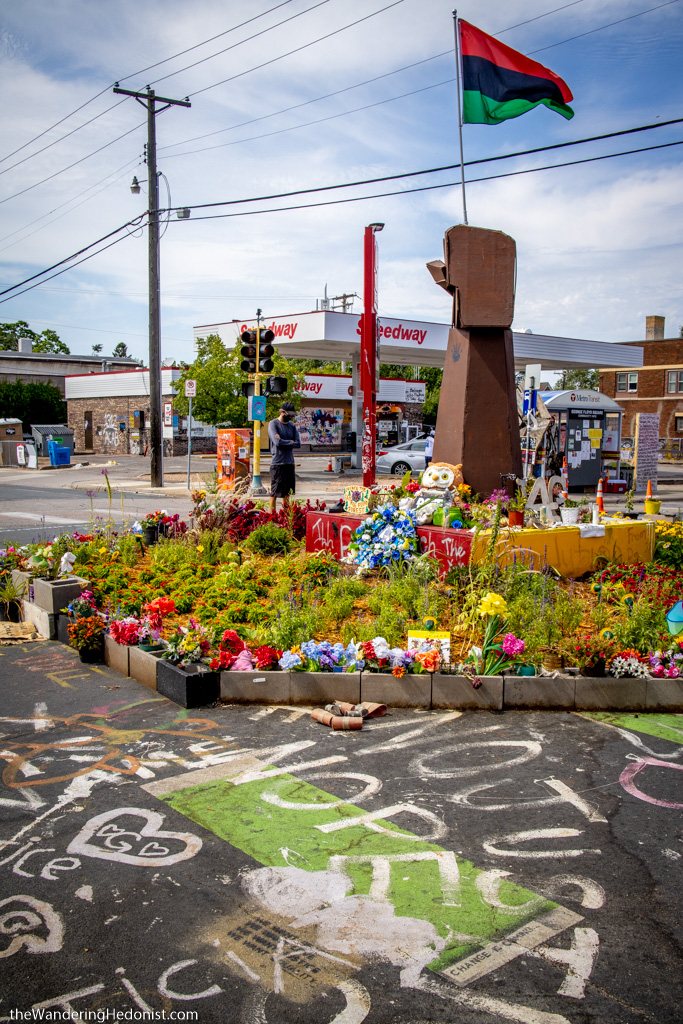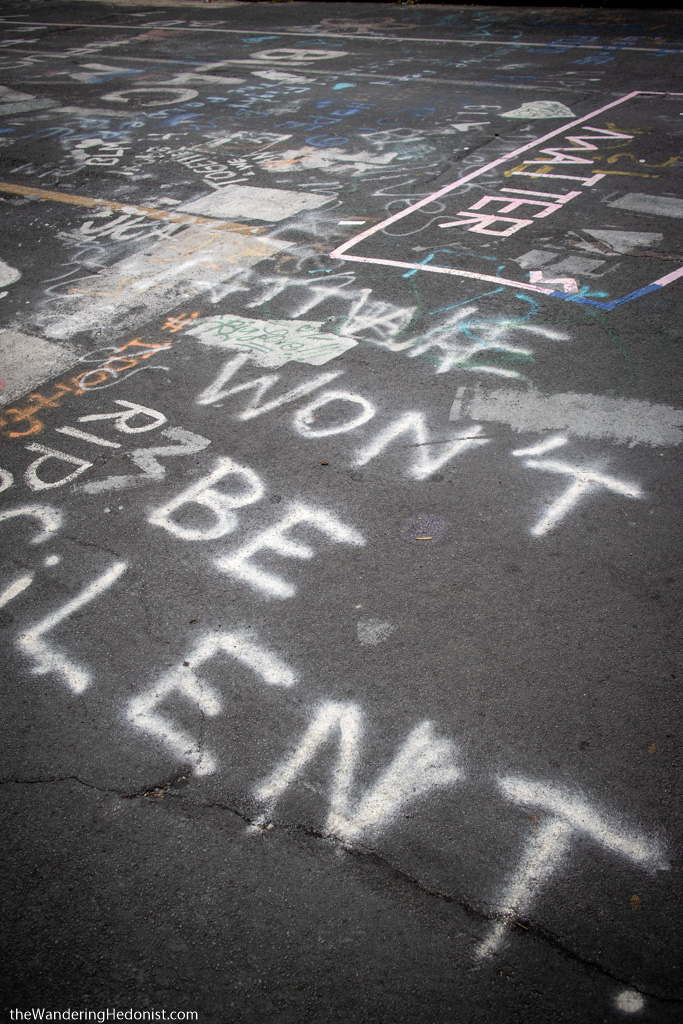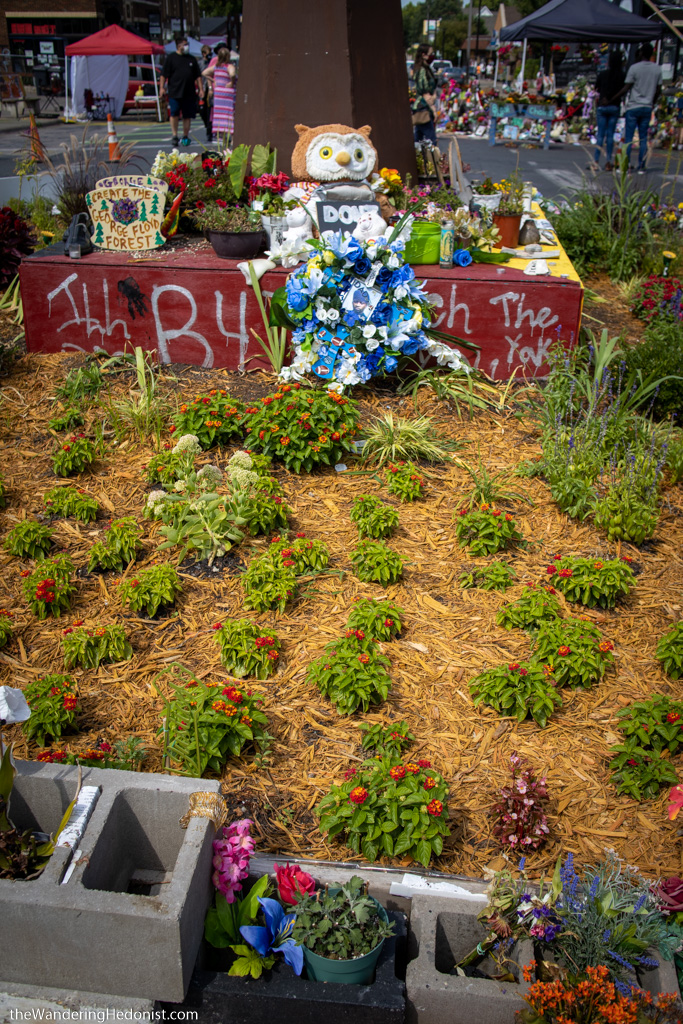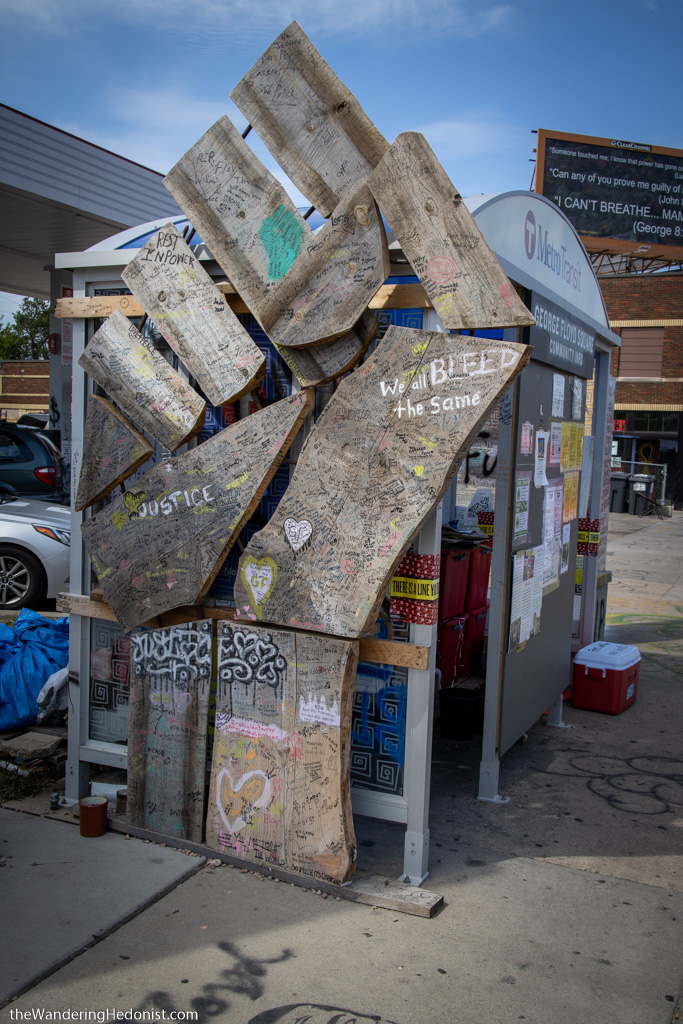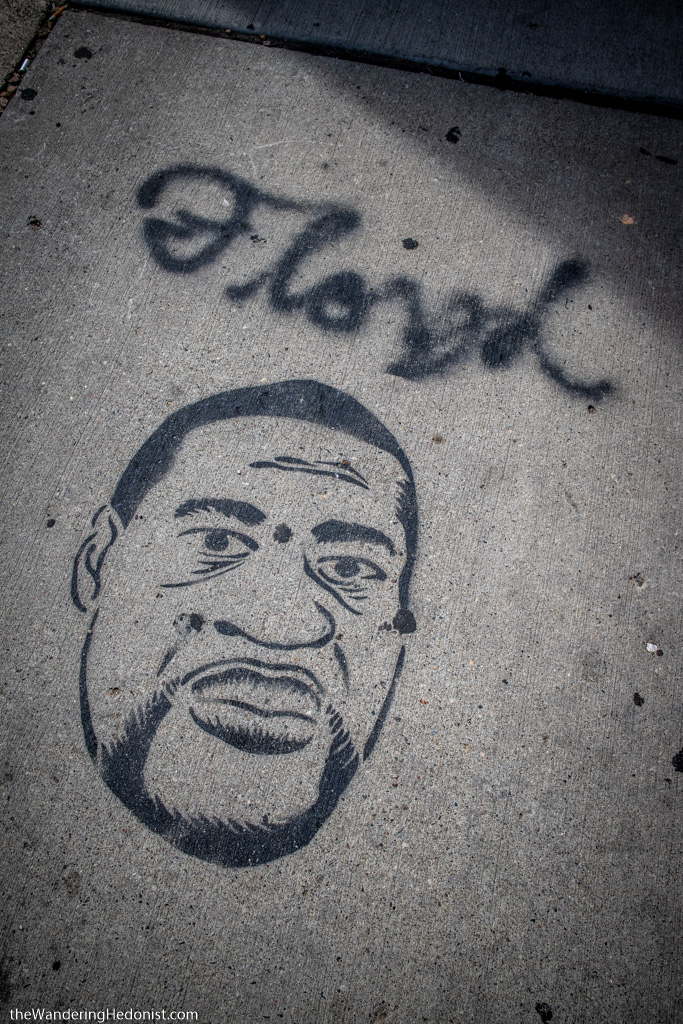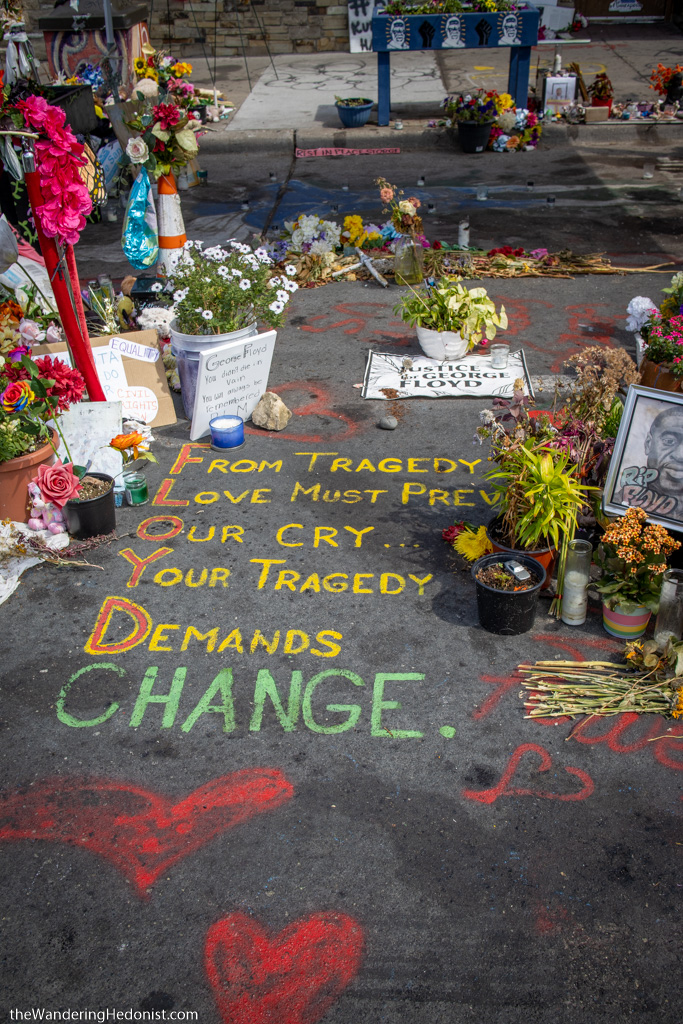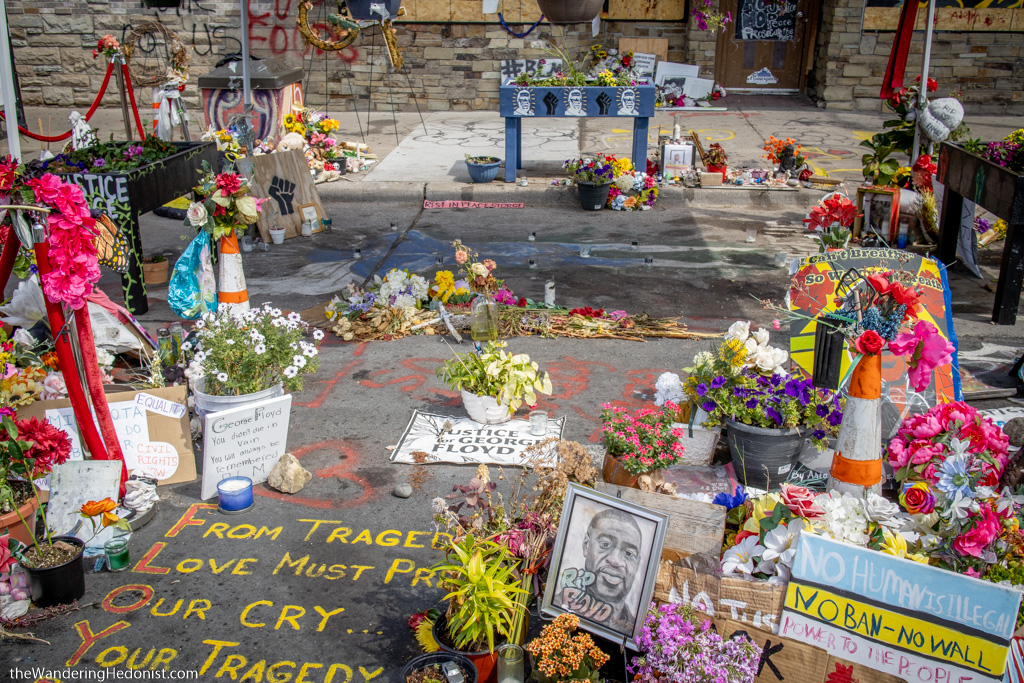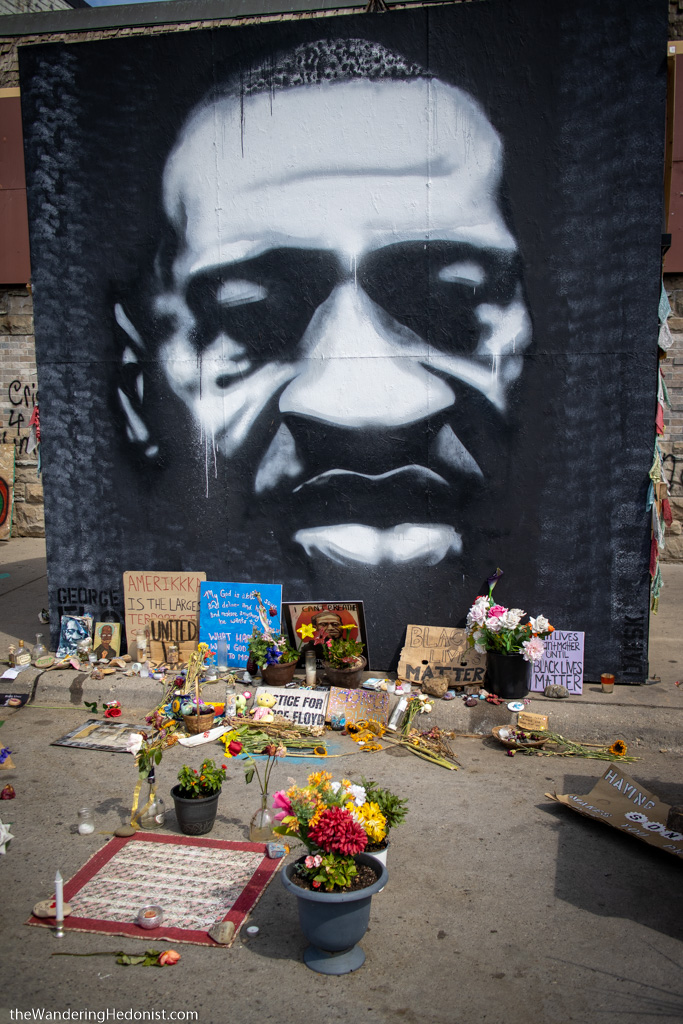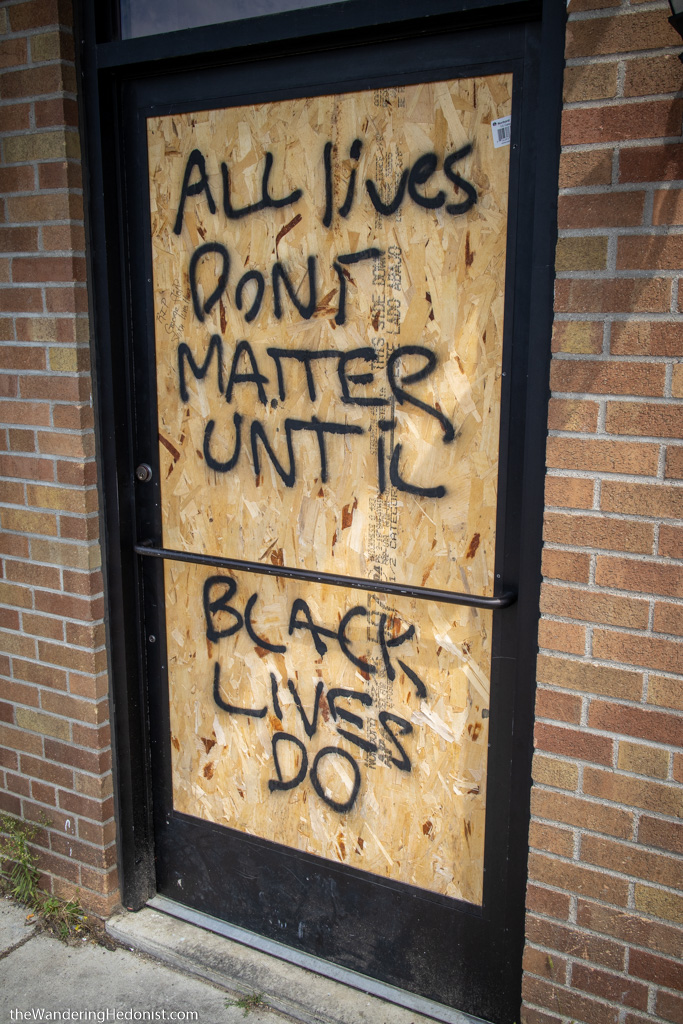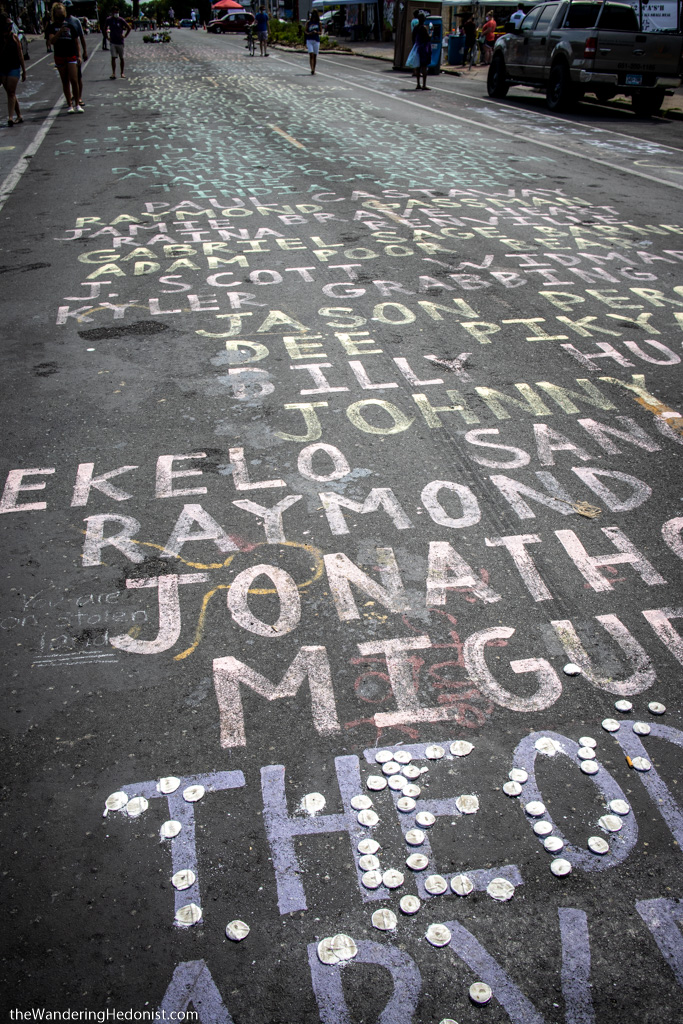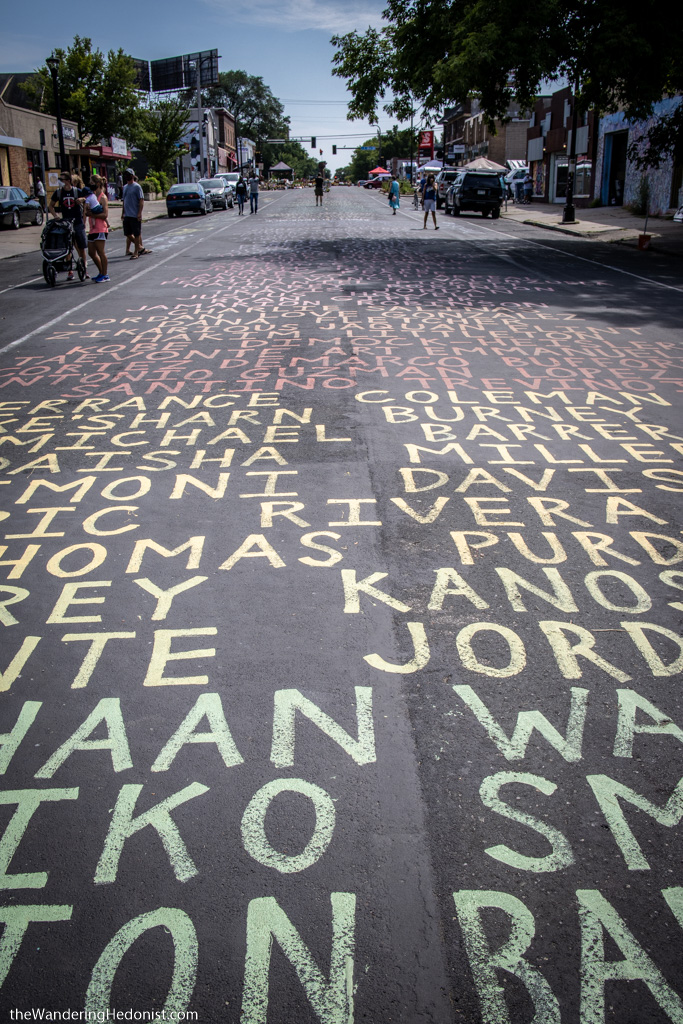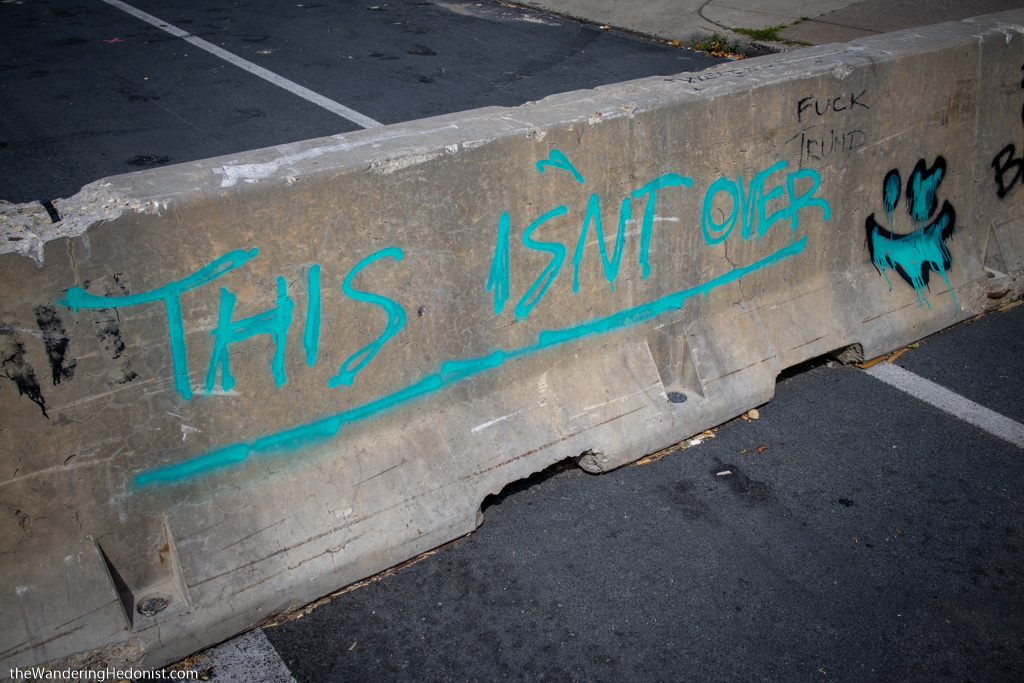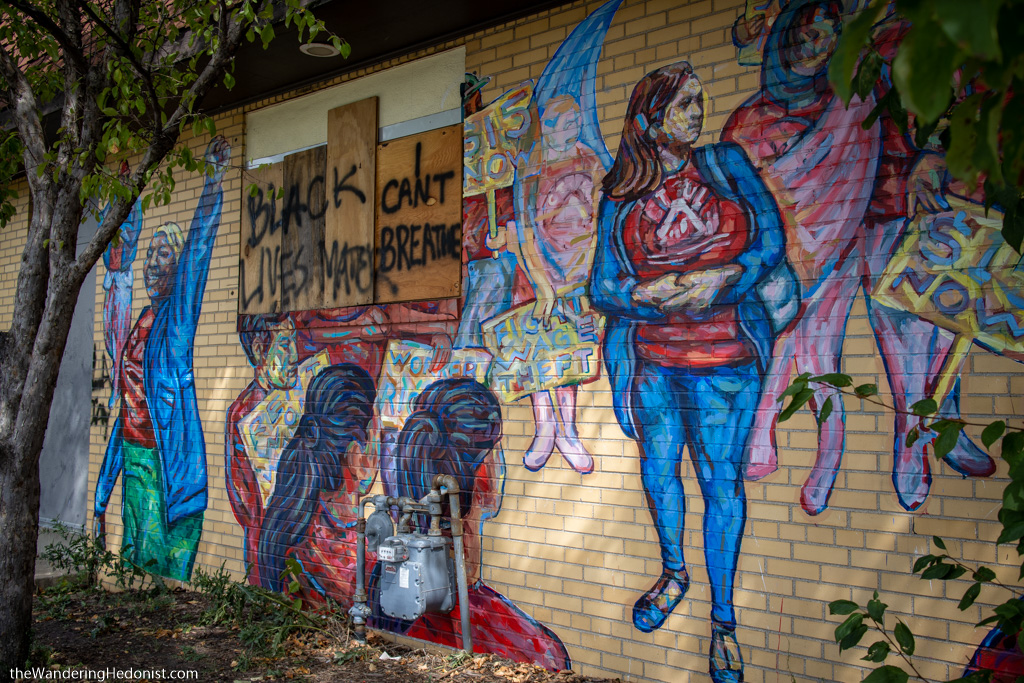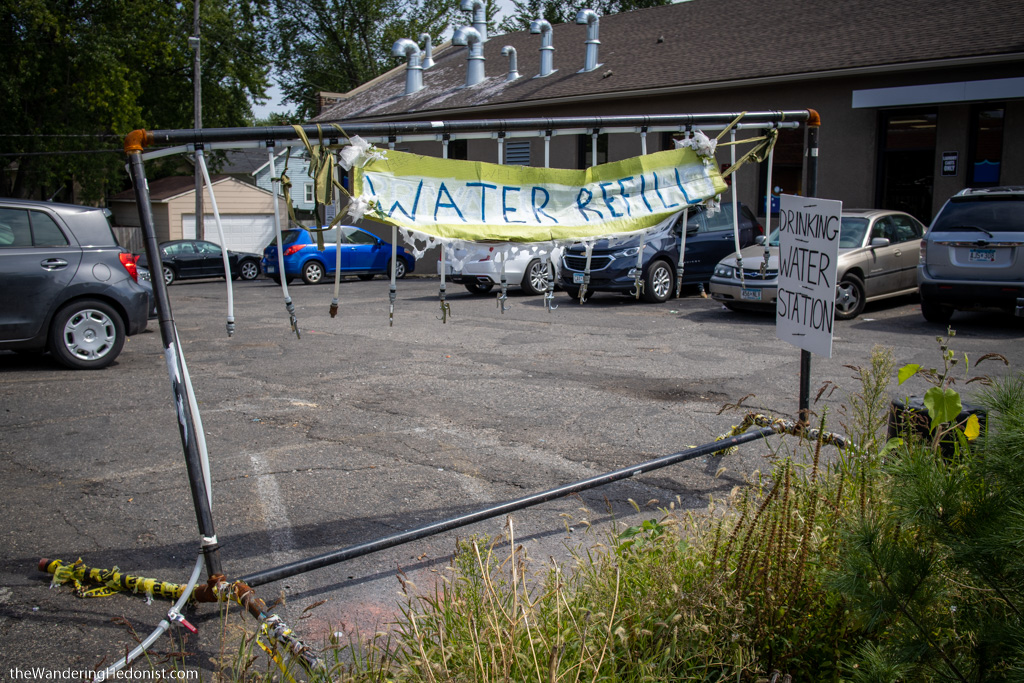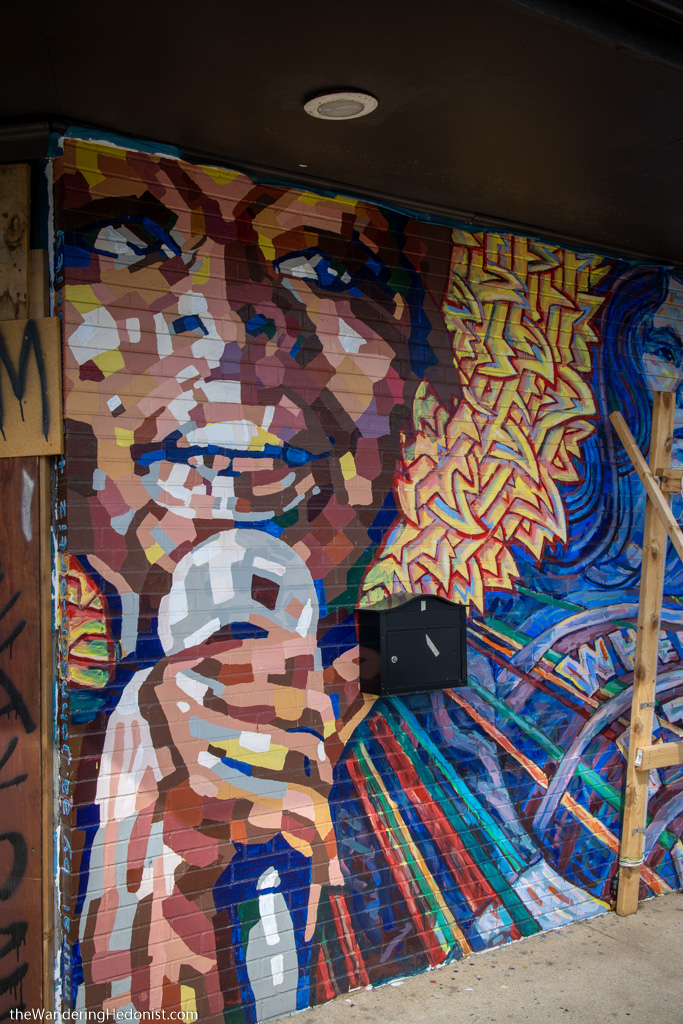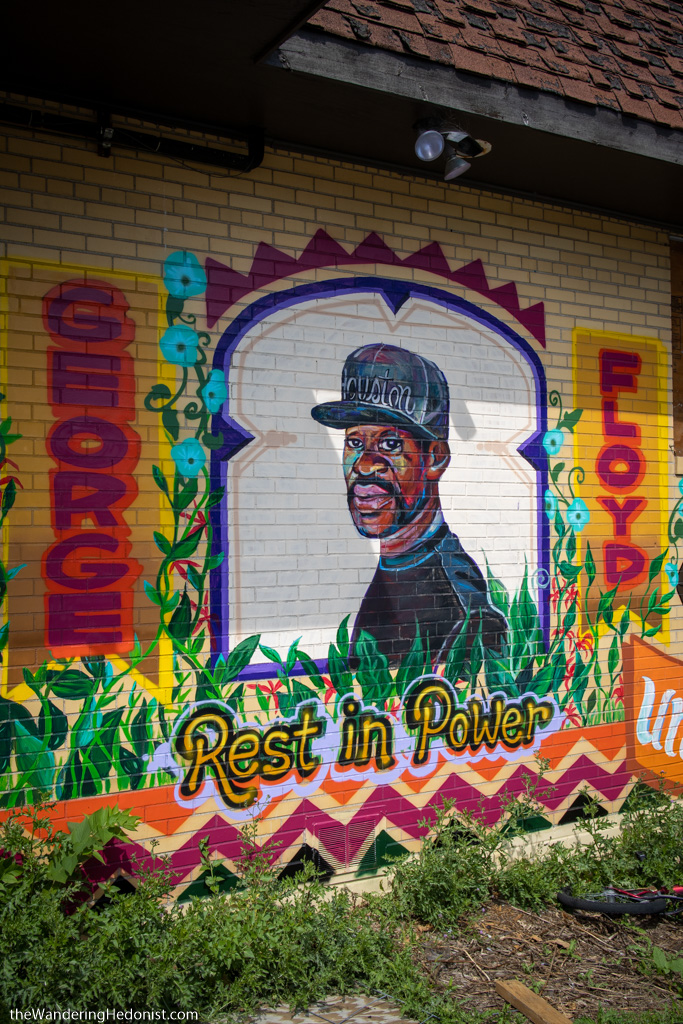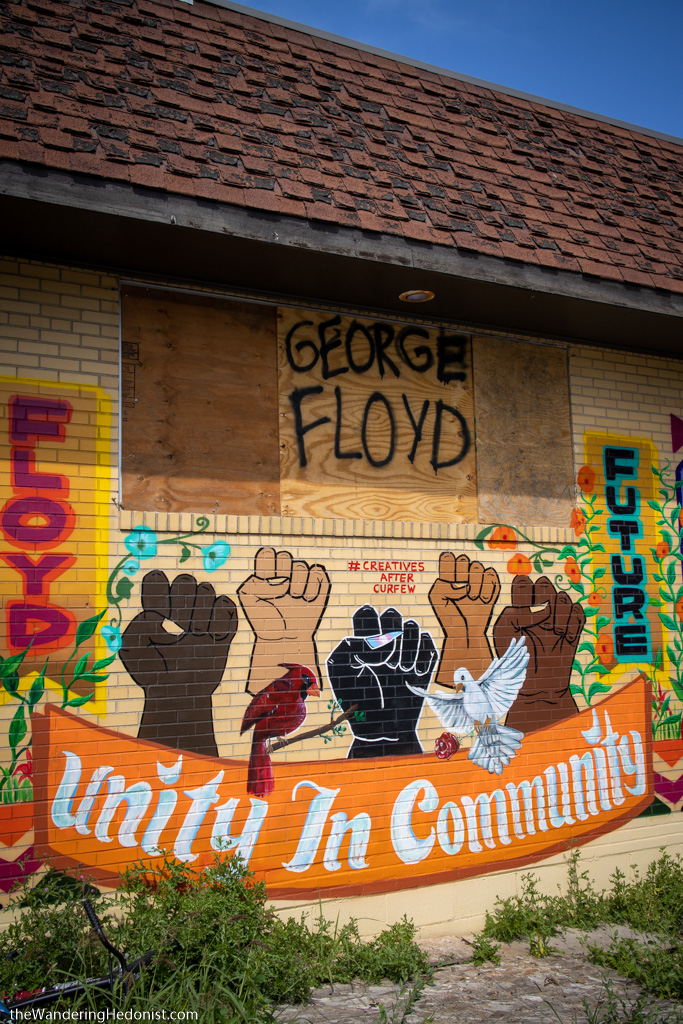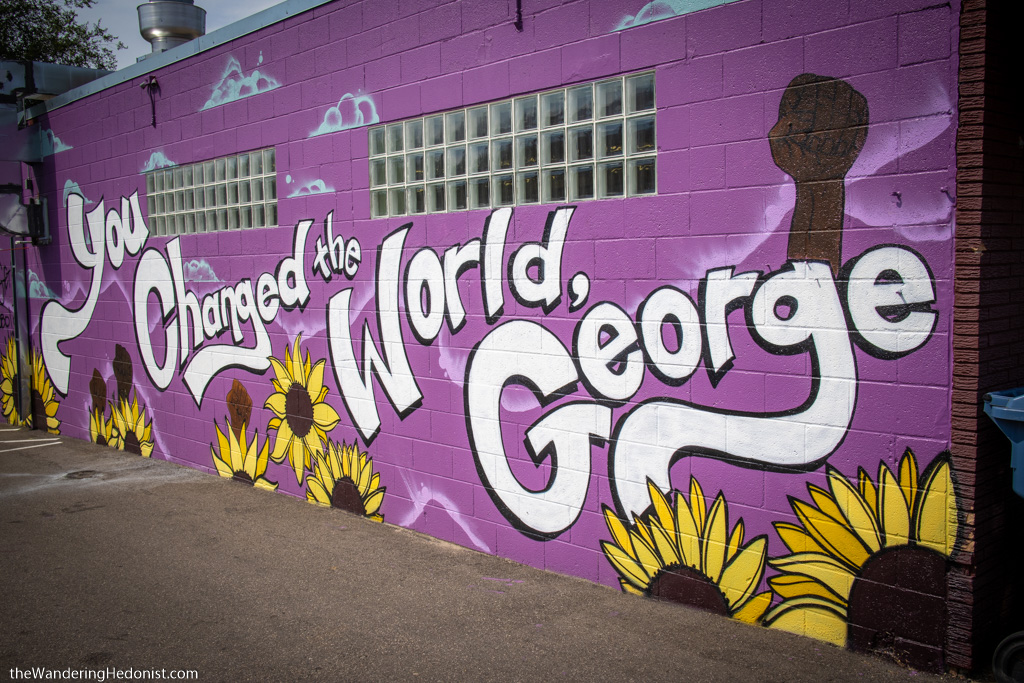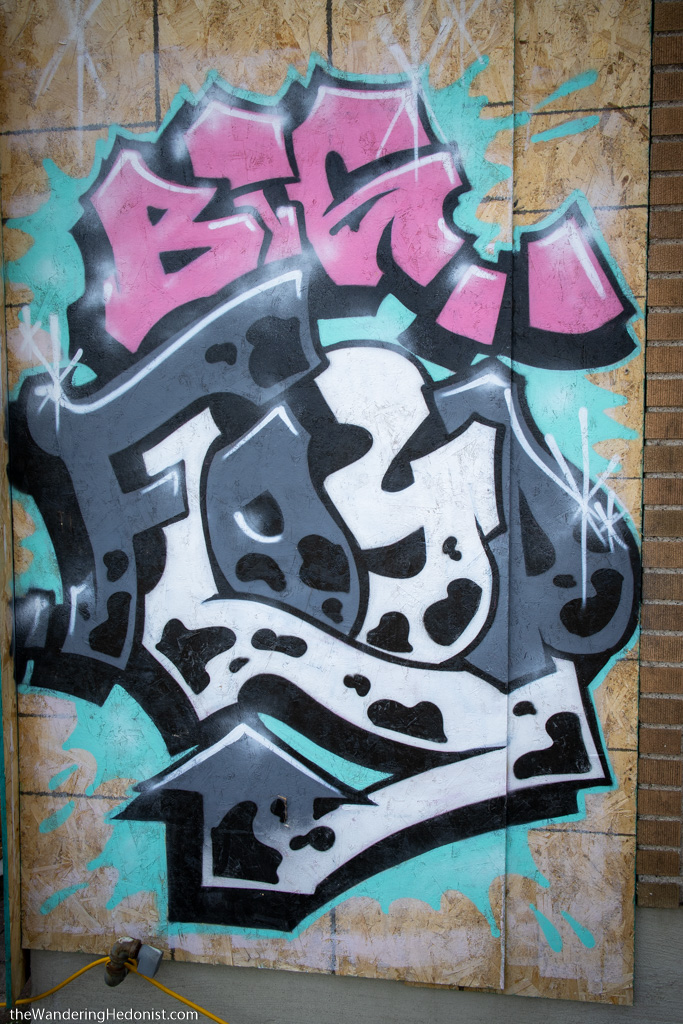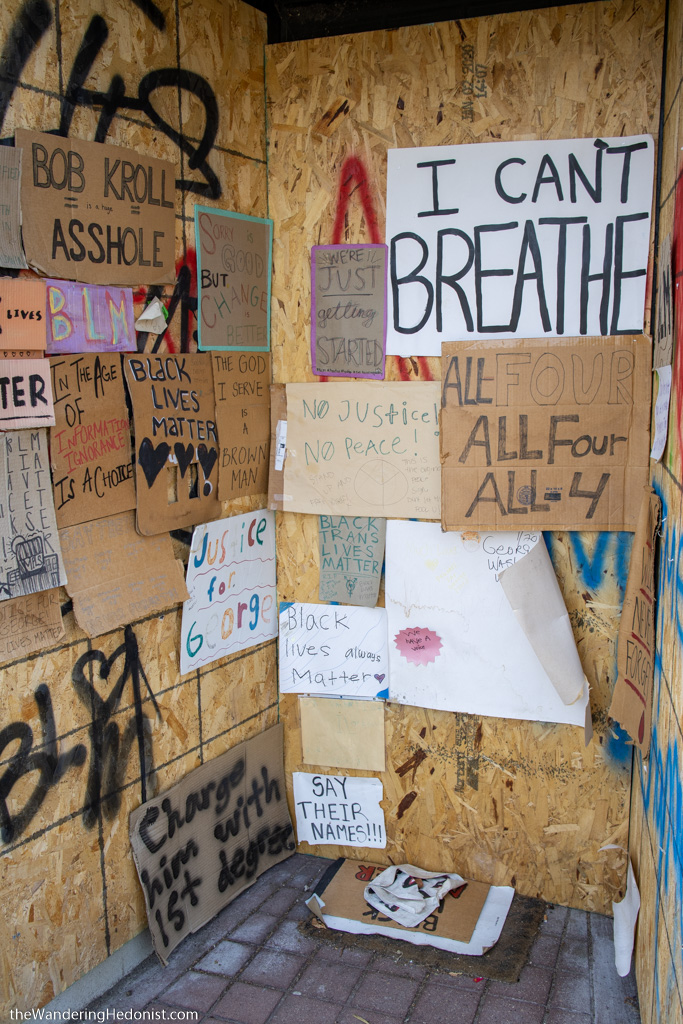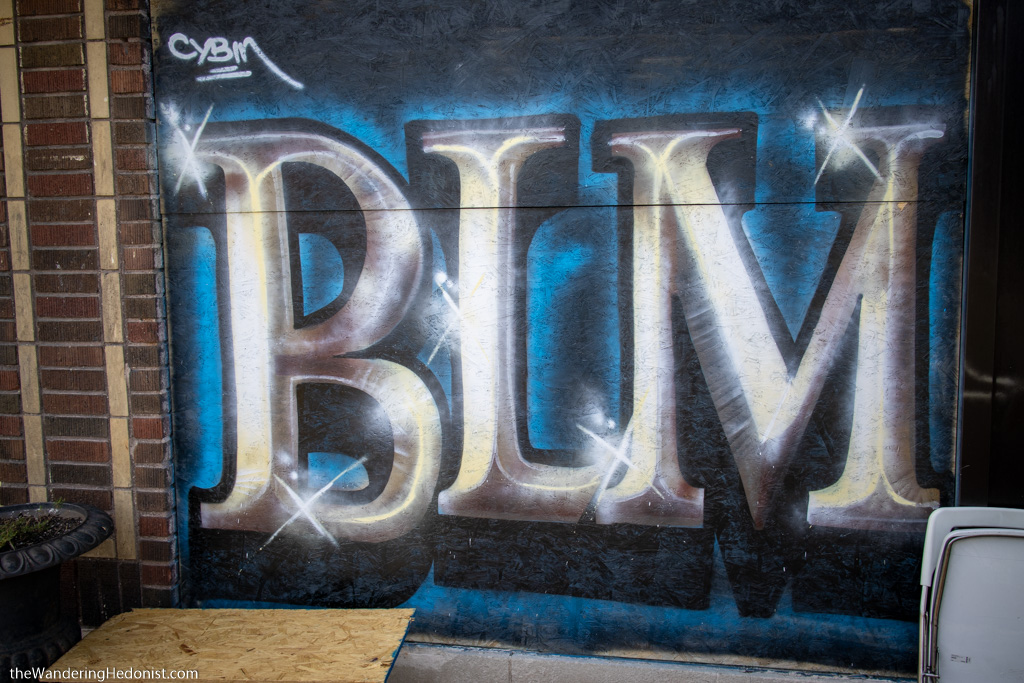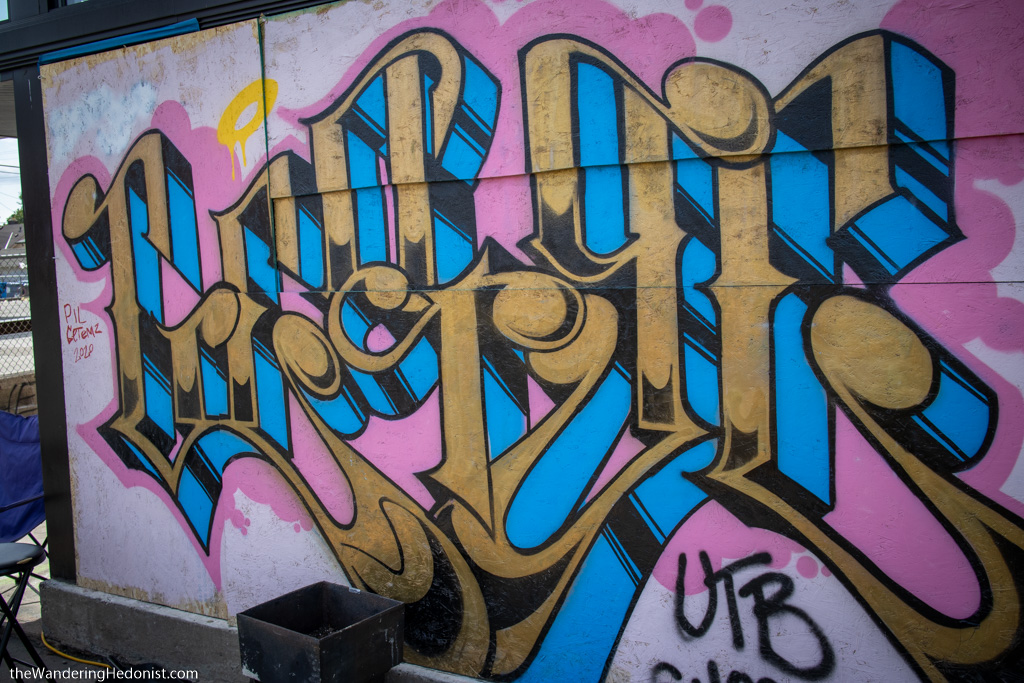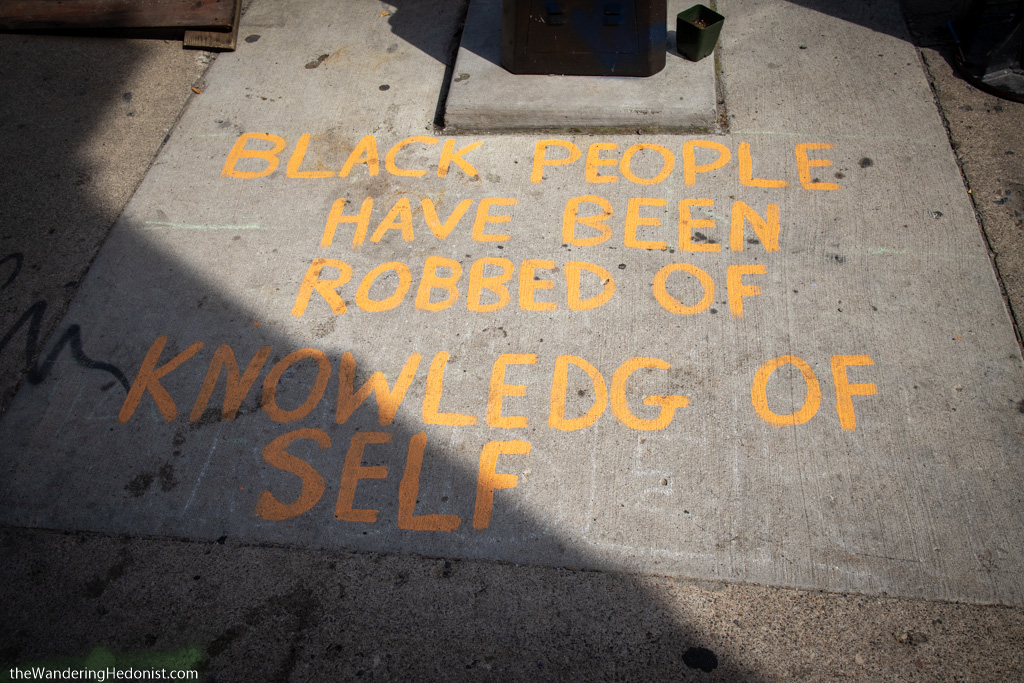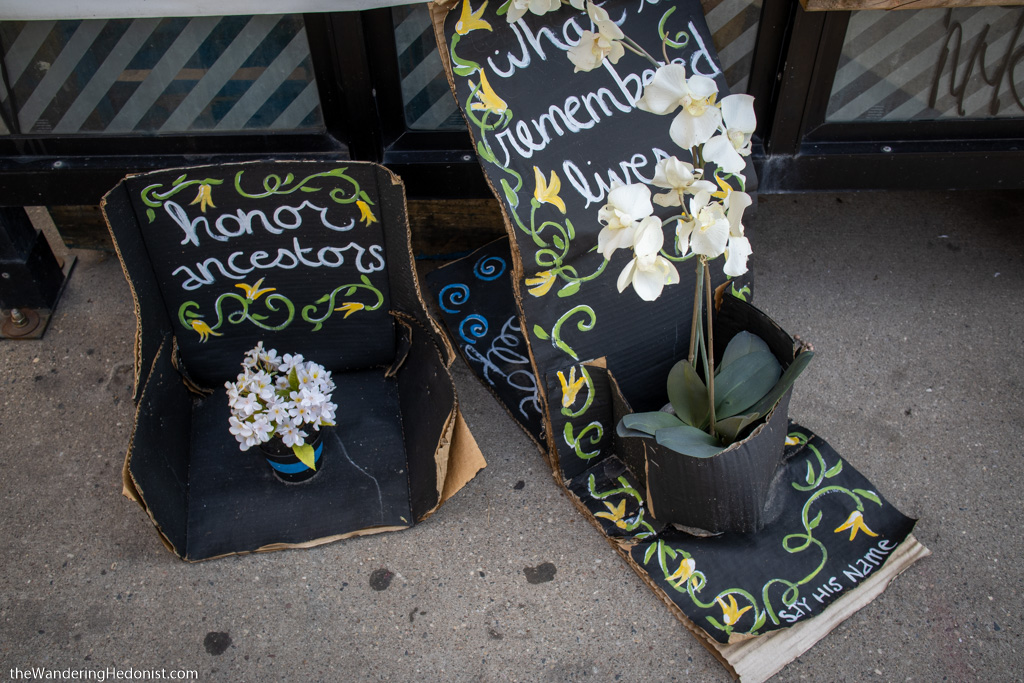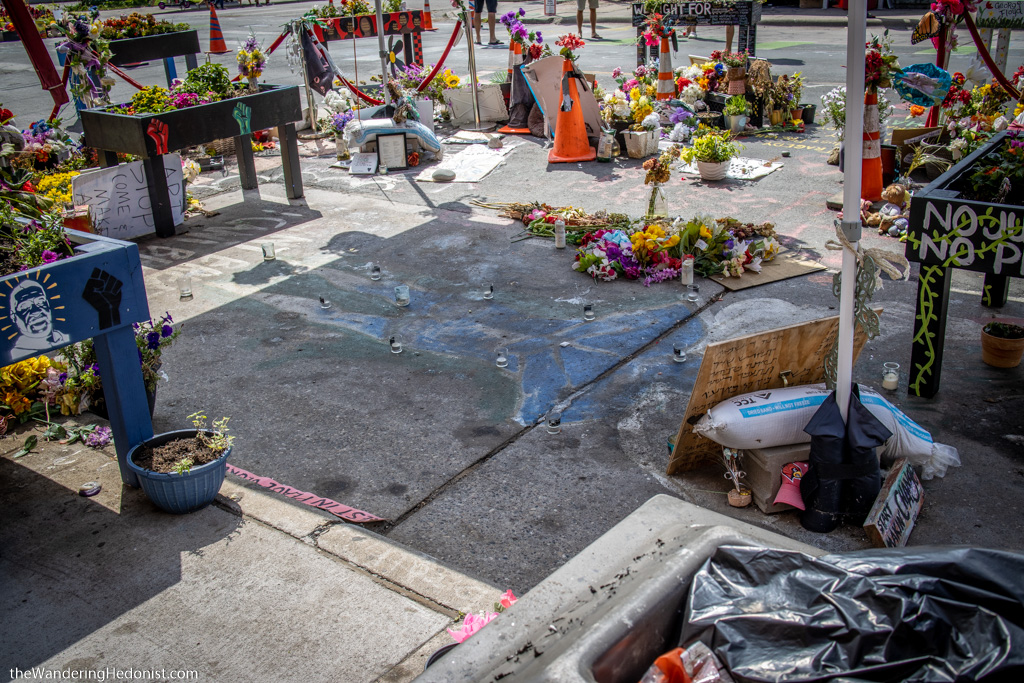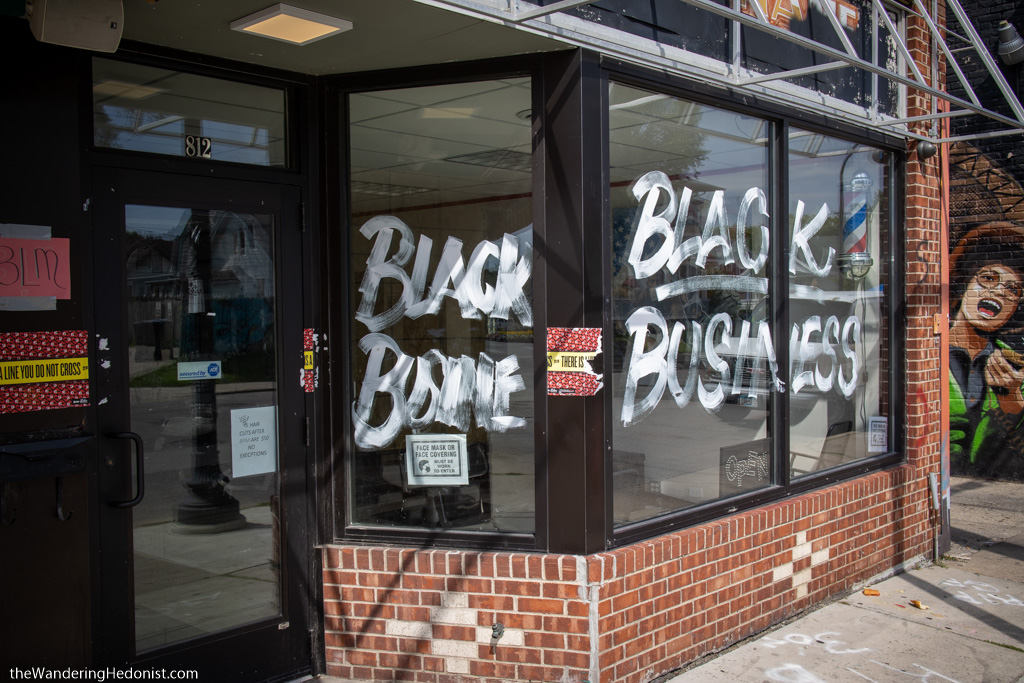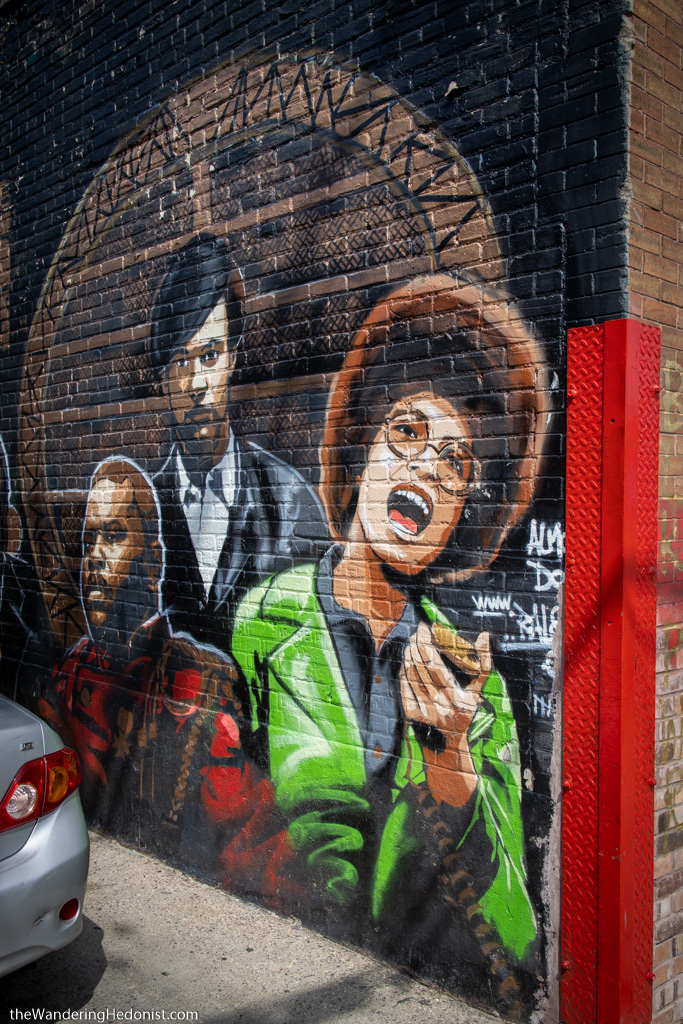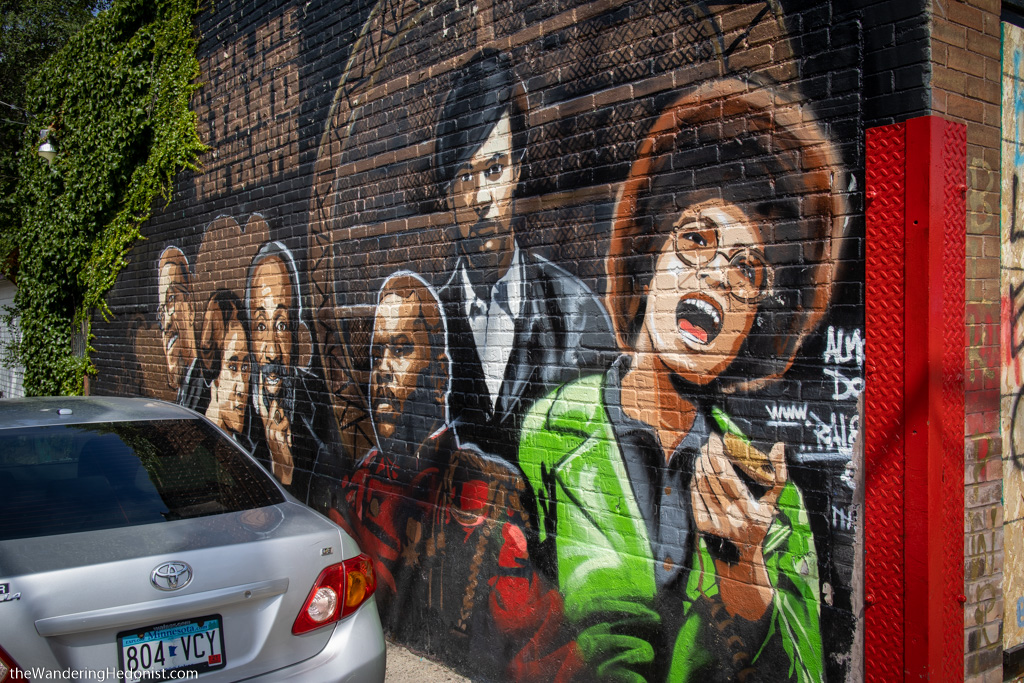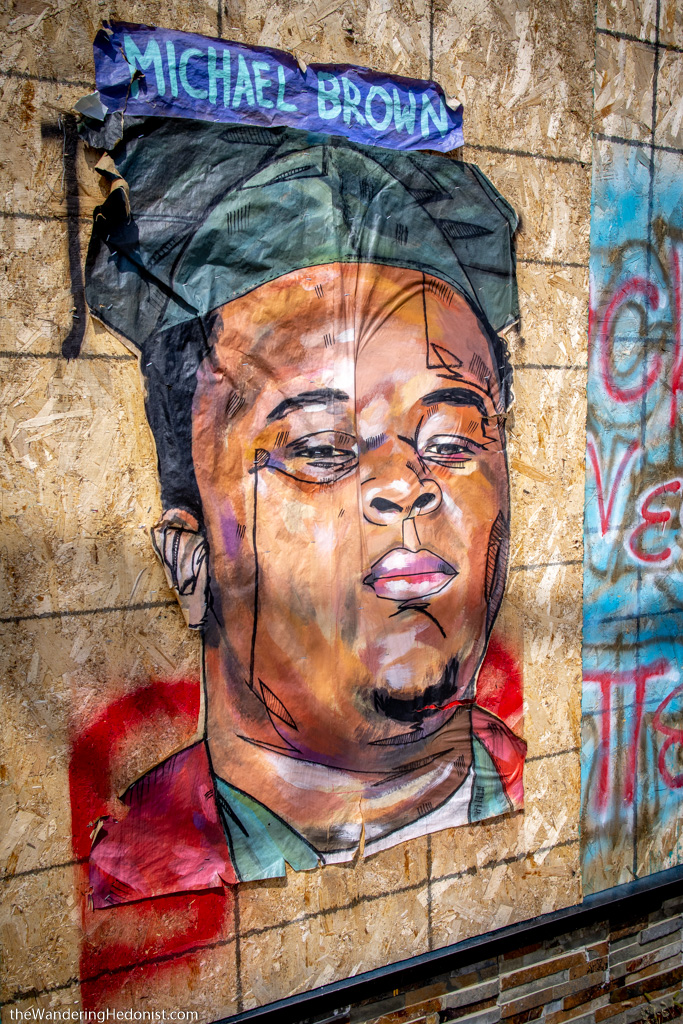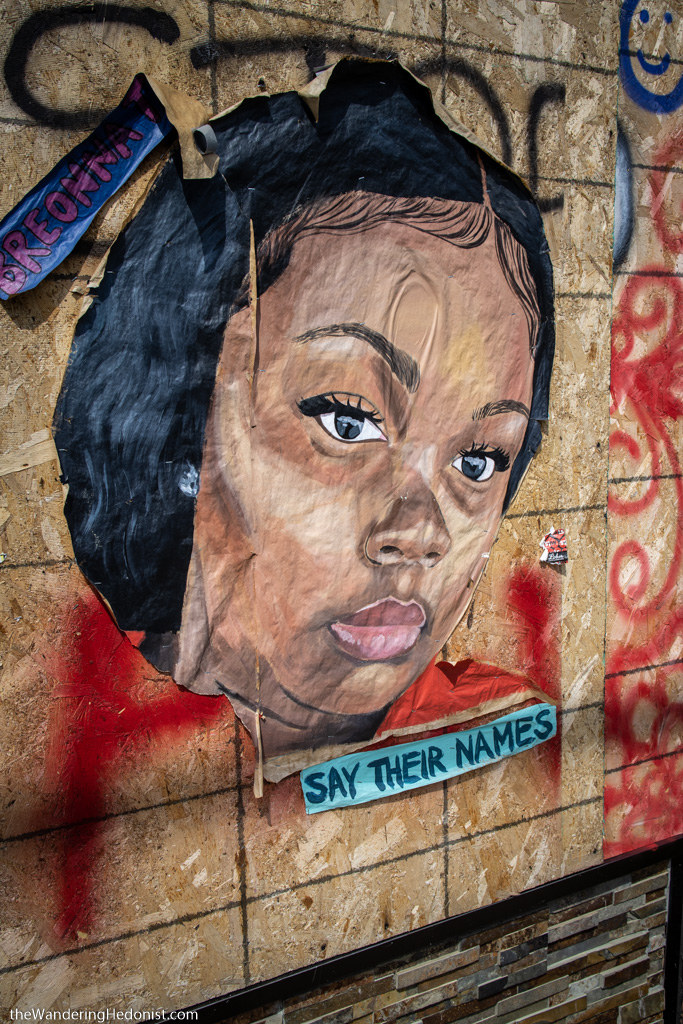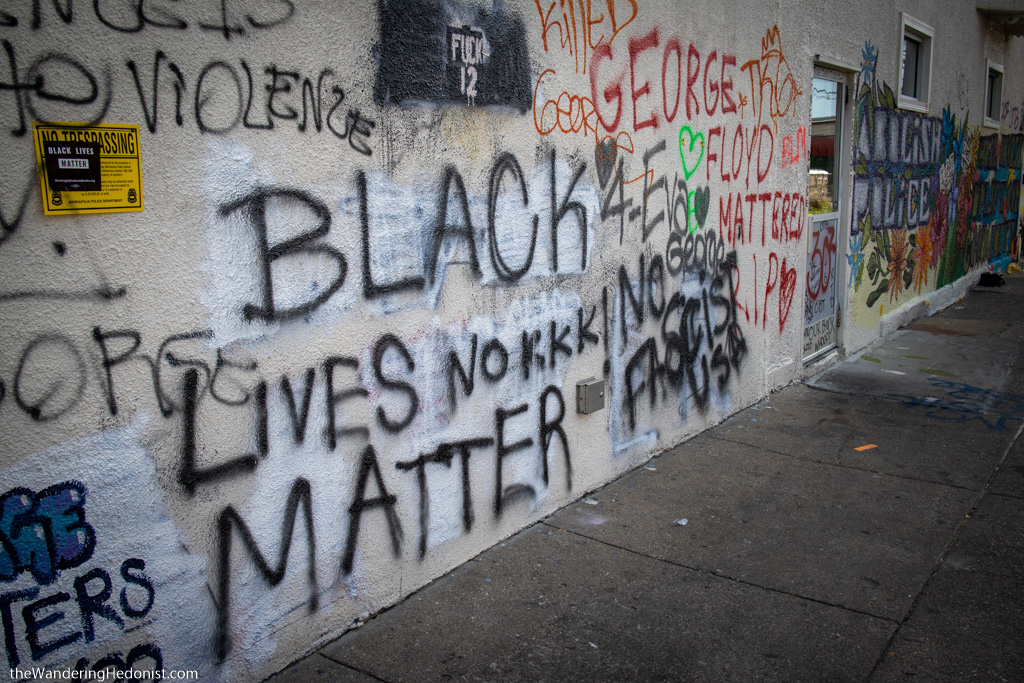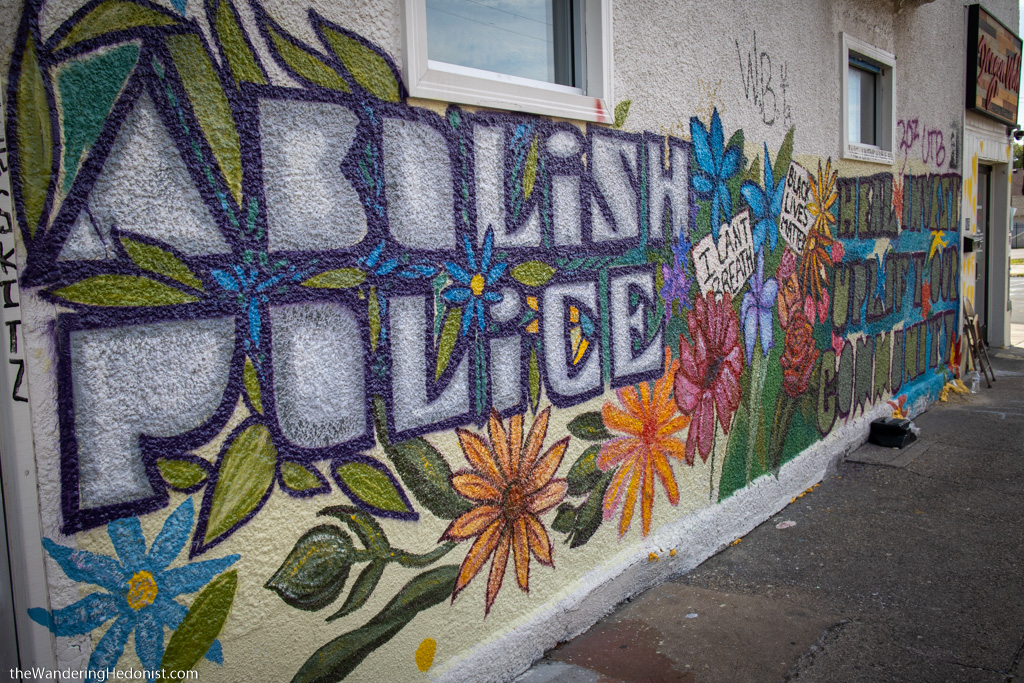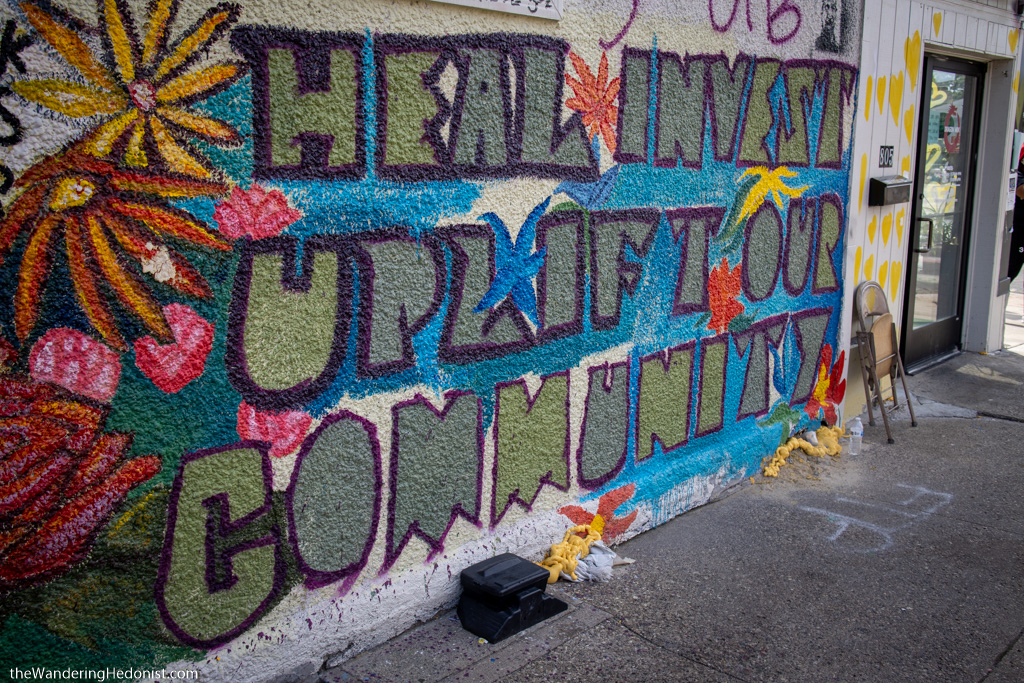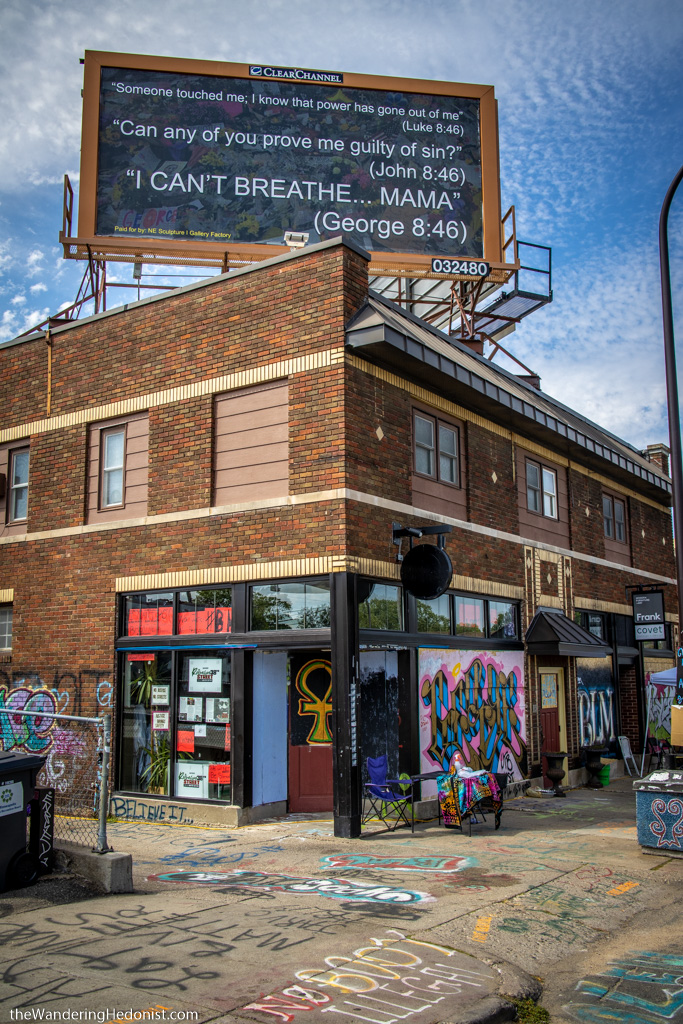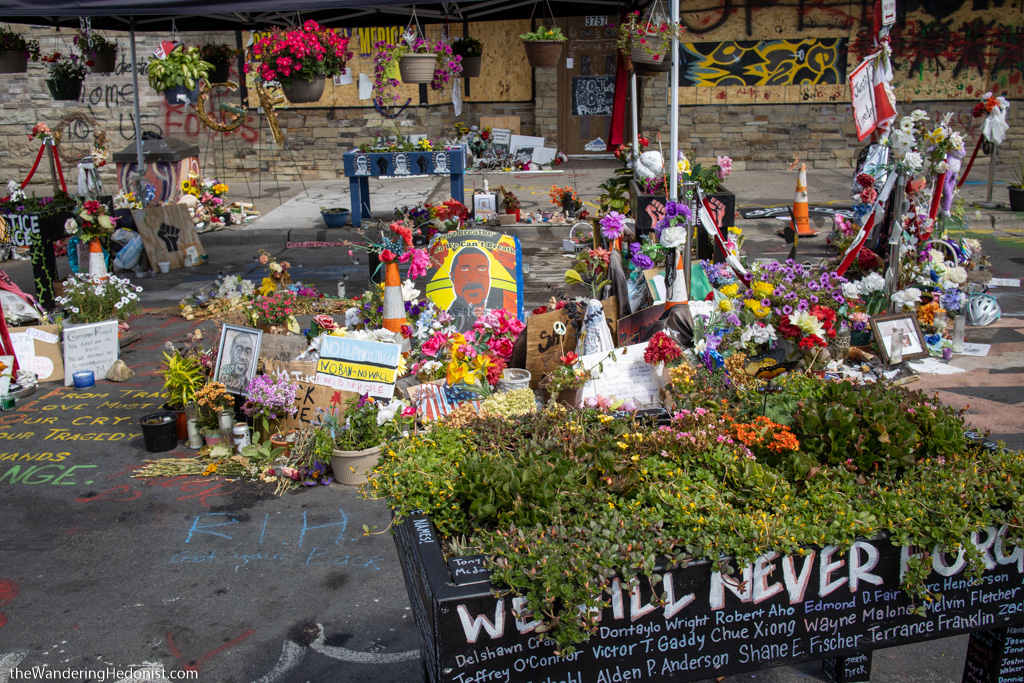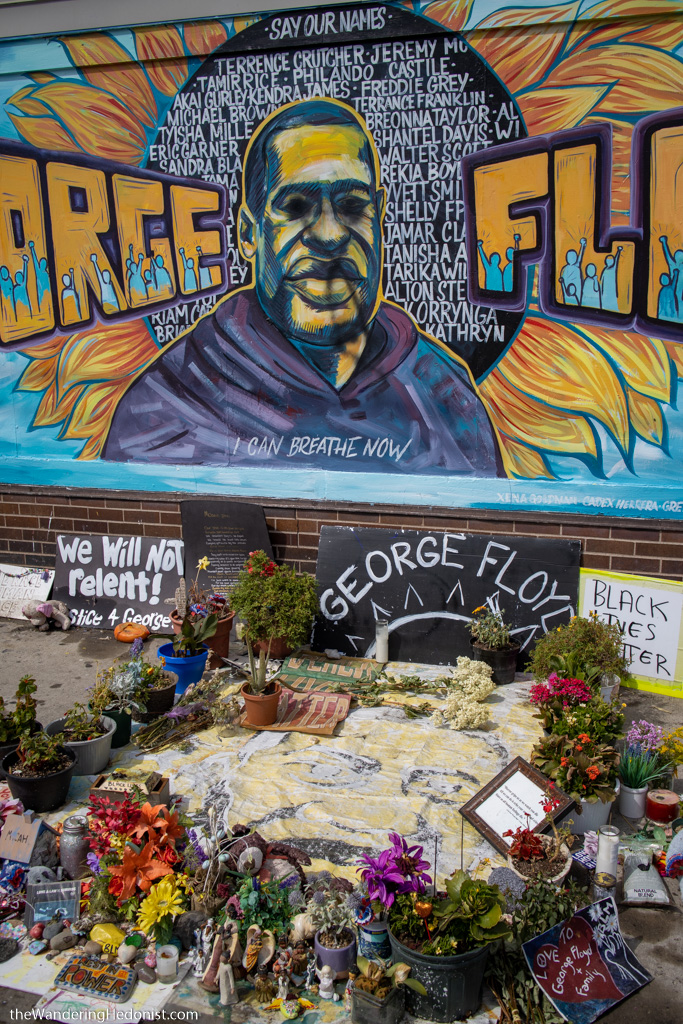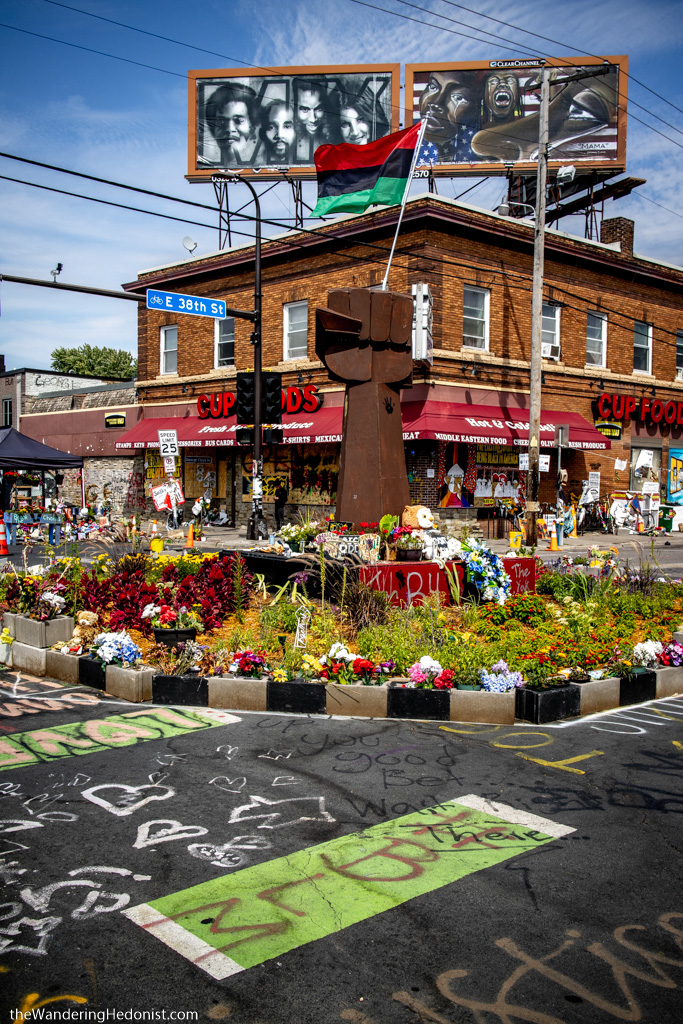George Floyd was the same age as I am, 46. He worked as a bouncer in a bar while he worked on his music, though had been recently laid off because of COVID. Actually he had COVID at the time of his death. On May 25, 2020 George bought a pack of cigarettes at Cup Foods, a market he frequented, then returned to his car with his two friends. After the transaction, an employee alleged that the $20 bill that he had used was counterfeit, walked out to the car that was still parked outside, and demanded that George return the cigarettes, which he refused, but did not leave.
The store employee then called the police saying that George had passed fake bills and that he was “awfully drunk” and was “not in control of himself”. No one has alleged that George created the bill or that he used the bill knowingly. Fake bills are circulated all the time without anyone’s knowledge. Especially small bills. And though intoxicated he had not posed a threat to anyone, harmed anyone, or even knowingly committed a crime. He did not flee the scene.
When the police (two officers in their first week of active duty) arrived, they pulled George from his car and when his behaviour became erratic, arrested him for passing a fake bill, handcuffed him, and placed him on the sidewalk against a wall. Keep in mind most of us have probably passed a fake bill at one point in our lives without knowing. The issue here was that George was under the influence of fentanyl and methamphetamine and he wasn’t coping well with being arrested and became panicked. The two officers then attempted to place George in the back of their car. George said he was claustrophobic and would rather stay outside but was placed there anyway after collapsing on the ground.
At this point two senior officers arrived on scene. The first, Tou Thao who has had 6 complaints filed against him and had recently settled a $25,000 lawsuit for handcuffing then beating a person breaking his teeth. The second, Derek Michael Chauvin, who had 17 complaints filed against him, the officer in charge.
Interestingly Derek Chauvin also worked as a bouncer in the same club as George with overlapping shifts. It is unclear how well they knew each other or if their personal relationship contributed to the events that followed.
When Chauvin approached the vehicle with George he opened the door and pulled him out again, at which point George collapsed on the ground again. Two officers held down George’s legs and body while Chauvin crouched with his knee on the back of George’s neck. This type of restraint is forbidden in police training and is well known to be dangerous as it cuts off the flow of blood to the brain. It functions similarly to a choke hold but is easier to subdue someone who is prone and is not uncommon to see during an arrest. I saw Seattle police do the exact same thing while arresting protesters in the following aftermath.
It is impossible to know what Chauvin’s intent was, but he kept his knee firmly planted on George’s neck for almost 8 minutes as he struggled to breath and called out for help. After 6 minutes George was prone and unconscious and there was no pulse found when another officer checked but still Chauvin kept his knee firmly planted on his neck. One of the officers twice requested to turn him over but Chauvin, the senior officer, said no and that he was ok, even though George had long since moved. No assistance was given. Even after the ambulance had arrived, Chauvin kept his knee on his neck until the medics physically tried to move his body, at this point completely limp.
The ambulance left the scene and soon radioed for the fire department which had since arrived at Cup Foods to come to the ambulance nearby as George was in full cardiac arrest.
The initial police response was: “After Floyd got out [of his car], he physically resisted officers. Officers were able to get the suspect into handcuffs and noted he appeared to be suffering medical distress.” with no mention of officer misconduct. The initial coroner’s report found “no physical findings that support a diagnosis of traumatic asphyxia or strangulation”, but found that Floyd suffered from coronary artery disease and hypertensive heart disease. The complaint cited the preliminary opinion that the “combined effects of Mr. Floyd being restrained by the police, his underlying health conditions and any potential intoxicants in his system likely contributed to his death”. But fully exonerated the officers involved.
Floyd’s family commissioned a second autopsy, carried out by Michael Baden, a pathologist and former New York City chief medical examiner who had autopsied Eric Garner, and attended by Allecia Wilson, director of autopsy and forensic services at the University of Michigan Medical School. He found that the “evidence is consistent with mechanical asphyxia as the cause of Floyd’s death”, and that the death was a homicide. He said Floyd died from “asphyxia due to compression of the neck”, affecting “blood flow and oxygen going into the brain”, and also from “compression of the back, which interferes with breathing”. He said Floyd had no underlying medical problem that caused or contributed to his death, and that being able to speak does not mean that someone is able to breathe. [Wikipedia.com]
The Hennepin County medical examiner then revised their report, issued June 1, classifying Floyd’s death as a homicide caused by “a cardiopulmonary arrest while being restrained” by officers who had subjected Floyd to “neck compression”. Other significant conditions were arteriosclerotic heart disease, hypertensive heart disease, fentanyl intoxication, and recent methamphetamine use. The report states that on April 3 Floyd had tested positive for SARS-CoV-2, the virus that causes COVID-19, but does not list it as a fatal or other significant condition. This report still tries to insinuate that George’s poor health was the culprit even though the more experienced report clearly rules out those conditions.
The community reaction to the homicide and subsequent cover-up by the medical examiner sparked outrage and quickly escalated into protests. The protests evolved into rioting and looting but evidence gathered since the events suggest that much of the initial destruction was seeded by white nationalist activists to bait racial conflict. A video of a man who was later identified as a white nationalist member clearly shows the man covering his face with an umbrella and full respirator walking past a neighborhood Autozone smashing out windows with a hammer then quickly walking away and threatening bystanders who followed him.
Protests soon spread across the country and the world to become one of the largest mass protests in history including over 2000 US cities, 60 countries, and every continent except Antarctica.
The intersection and a block in each direction as of my visit were still blocked off and a huge monument constructed at the center of the intersection. Several other shrines were still active including a couple of murals painted outside of Cup Foods covered in flowers and messages on paper. The spot where George died under the knee of Chauvin was covered with a canopy and an outline of his body was outlined with candles with more flowers and messages encircling the area. The names of people killed by police were written a full block down the road and local billboards covered with messages about George.
I feel lucky to have gotten the opportunity to see the site before the city inevitably disassembles the shrines. It was eerily similar to the protest areas in Seattle I visited during the early days of the protests. I didn’t want to be disrespectful by photographing the shrines but I felt compelled to document the area for other people to see what I saw.
The night before we visited someone spray painted the eyes of one of the murals black and on his face. Pretty sad.
Photos of the plaza
